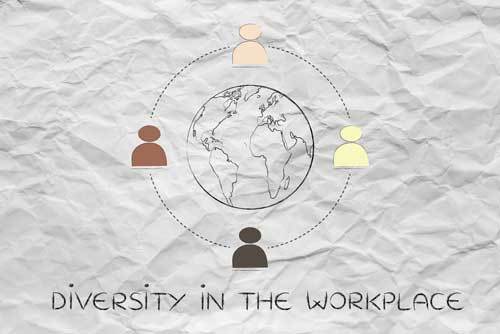- in Blog , Human Resources , Research by David Wilkinson
- |
- 1 comments
How organisational diversity policies can hide racial discrimination

Organisational diversity polices can cause more problems than they solve. Whilst there is a plethora of research which shows that multicultural approaches to diversity tend to reduce prejudice and increase positive multicultural relationships, a new study has found that there can be a negative side effect of organisational diversity policies.
Keywords: Racial discrimination, diversity, diversity policy, multiculturalism, colour blindness, Organisational diversity polices
- Prohibition on racial discrimination
- Multiculturalism and colour blindness
- Multicultural approaches to organisational diversity polices
- The study
- Findings – the real impact of organisational diversity polices
- The false fairness effect
- Multiculturalism versus colourblindness
- Reference
This research briefing was sent to members in October 2017
Researchers wanted to know whether organisational diversity policies, procedures and structures could end up concealing racial discrimination in the workplace.
Be impressively well-informed
Get your FREE organizational and people development research briefings, infographics, video research briefings, a free copy of The Oxford Review and more...
Prohibition on racial discrimination
Virtually every nation around the world has at the very least some form of anti-racial discrimination legislation which makes it illegal for organisations to discriminate on racial grounds. Such legislation has been fundamental in creating diverse and discrimination free work environments. Organisational diversity polices frequently help to create organisations with healthy and diverse populations of employees…. but not always.
Multiculturalism and colour blindness
There are two predominant ideologies which sit behind organisational diversity polices:
- The multicultural approach, in which racial differences are acknowledged accepted and celebrated. The multicultural approach is asking people to be open to differences between people.
- The colour blind approach which seeks to ignore or reduce any form of emphasis on racial differences. The thinking behind the colour blind approach is that acknowledging racial differences on its own automatically introduces difference, conflict and bias.
Multicultural approaches to organisational diversity polices
Previous research has found that the multicultural approach tends to have better interpersonal and psychological outcomes for organisations than the colour blind approach.
These approaches are usually codified in some form of diversity policy within the organisation. Whilst generally seen as a good thing, a number of studies have discovered that formal organisational diversity policies can create problems.
For example, it has been found that where such explicit diversity policies exist in organisations, the dominant culture almost always evaluates the organisation as being fair towards minorities, whilst at the same time becoming blind or less aware of cases of discrimination, compared to when such formal policies are absent.
In effect what these studies are showing is that many diversity policies and structures are to some extent at least hiding racial discrimination. This study looked to find out why this is the case.
The study
This study, conducted in America, examined a series of multicultural organisations and questioned over 600 adults about incidents of racial discrimination in those organisations, testing for issues of perceived fairness within the organisation.
Findings – the real impact of organisational diversity polices
The researchers discovered that organisational diversity polices frequently created situation where the dominant culture within the organisation believes that the organisation is both culturally aware and fair to everyone equally within the organisation.
However, as the researchers put it, organisational diversity policies frequently create a blindfold in that they generate a false perception of fairness that actually conceals racial discrimination and delegitimises racial discrimination claims.
The false fairness effect
Bizarrely, organisations who have illegally failed to implement a diversity policy tend to be more aware of inequalities on racial grounds that organisations with a diversity policy. Further the researchers found that “when an organisation’s diversity messages communicate openness and acceptance towards diverse racial groups, it actually increased the potential for racial discrimination to be camouflaged and any discrimination claims to be discredited”.
The research labelled this as the ‘false fairness effect’.
Multiculturalism versus colourblindness
Additionally, the researchers discovered that this effect was significantly more predominant in organisations that promoted a multicultural approach as opposed to the colour blind approach. What appears to be happening is that, because multicultural approaches focus on differences, there appears to be some form of reverse psychology being applied which makes all but the most obvious forms of racial discrimination invisible, at least to those observing the situation. Because multiculturalism focuses on openness to differences there is an implicit message that because we are open to differences (the policy says so) there can’t be any discrimination.
Because the colour blind approach focuses on the similarities between people it is more noticeable when someone is not being treated the same as everyone else.
Interestingly, the study found that the vast majority of organisational diversity policies are based on the multicultural ideology.
Reference
Gündemir, S., & Galinsky, A. D. (2017). Multicolored Blindfolds: How Organizational Multiculturalism Can Conceal Racial Discrimination and Delegitimize Racial Discrimination Claims. Social Psychological and Personality Science.
Not a member? – Apply to join now and get:
- Weekly research briefings sent direct to you
- A copy of the Oxford Review containing between twelve and sixteen additional research briefings every month
- Research Infographics
- Video research briefings.
- The occasional special reports / short literature reviews on topics that appear to be getting a lot of research attention or if there has been a recent shift in the thinking or theory
- The ability to request a watch list for new research in keyword areas (as long as it is within the realms of:
- Leadership
- Management
- Human resources (not legal aspects)
- Organisational development
- Organisational change
- Organisational learning
- Learning and development,
- Coaching
- Work Psychology
- Decision making
- Request specific research / brief literature reviews
- Access to the entire archive of previous research briefings, copies of the Oxford Review, infographics, video research briefings and special reports.
- Access to Live Reports – continually updated as new research on the topic is released
- Members only podcasts – research briefings in audio – coming soon
- Live continually updated reports
Be the most up-to-date person in the room
Be impressively well informed

Get the very latest research intelligence briefings, video research briefings, infographics and more sent direct to you as they are published
Be the most impressively well-informed and up-to-date person around...





3imputation